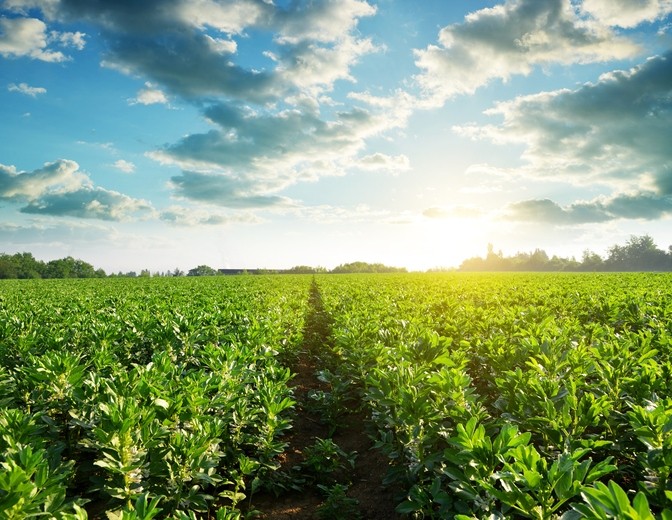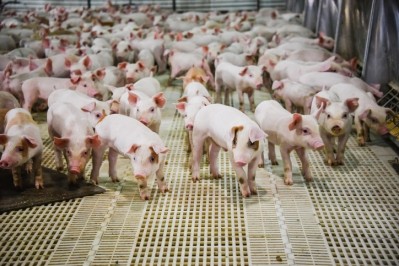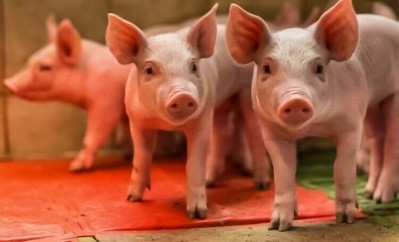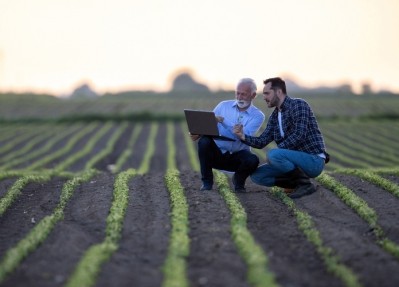Local heroes: How do faba beans, rapeseed products and grass derived protein stack up against soybean meal?

The aim of the research, published in Livestock Science, was to investigate the effect of substituting imported soybean meal (SBM) with locally produced protein feed.
The high climate impact of the feed used in European pork production can, to a great extent, be ascribed to a high inclusion rate of imported protein, mainly SBM (Chiozza et al., 2020), with its associated deforestation and transport linked GHG emissions, said the authors. European countries’ reliance on imported protein raw materials exposes them to global market volatility and geopolitical developments, they added.
Using a combination of local protein sources would be optimal in terms of replacement options, said the researchers.
The authors set about evaluating fava beans, rapeseed cake and grass derived (green) protein in this respect, looking at how such raw materials might affect pig performance, along with the sensory quality and the climate impact of pork production.
They stressed the necessity of maintaining a good feed conversion ratio (FCR) to avoid increased use of feed, as a negative FCR would counteract the positive effect of changing to low carbon feed sources. “To secure the overall sustainability of pig production, knowledge is needed of the effect of substituting imported protein with different local protein on the entire production chain; from animal productivity to meat quality and climate impact.”
Local candidates
In Northern Europe, protein sources such as fava beans (Vicia faba L.) and rapeseed (Brassica napus) are considered potential alternatives to imported SBM for monogastric animals.
Fava beans, noted the academics, are grown world-wide in cropping systems, and are used as a protein source crop for cattle and for pigs and poultry. They are high in protein and, when compared with SBM, the protein in fava beans is richer in lysine making it interesting in monogastric feed formulations, they said.
However, fava beans are also low in methionine and cysteine, which can challenge their inclusion in diets for growing-finishing pigs (Kaldy and Kasting, 1974; Vils and Vinther, 2016; Vils et al., 2017), cautioned the team.
Rapeseed products are popular raw ingredients in animal diets in the EU next to SBM. “Rapeseed cake, the by-product of oil extraction in presses, are high in sulphur-containing amino acids, but conclusions from animal trials are varied and the monogastric feed quality is heavily dependent on cultivar and extraction method used (Kasprzak et al., 2016).”
Fava beans and rapeseed, though, contain anti-nutritional factors (ANF). Both species contain tannins and rapeseed contains glucosinolates which, combined with the thick indigestible hull, will limit the inclusion of these two protein sources in feed for monogastrics (Jezierny et al., 2010; Masey O'Neill et al., 2012; Lee et al., 2020). “An increased focus on improved nutritional quality through plant breeding programs and process optimizations makes both crops interesting as local sustainable protein sources for monogastrics.”
In recent years, green protein produced through biorefining of forage crops has gained immense interest as a more sustainable alternative to imported feed protein (Santamaría-Fernández and Lübeck, 2020), outlined the authors.
Cultivation of perennial forage crops is associated with several environmental benefits, such as high carbon sequestration, reduced leaching of surplus nutrients and marginal need for pesticides (Solati et al., 2017; Manevski et al., 2018), and is believed to have a lower negative impact on environment and climate compared to annual crops (Hermansen et al., 2017; Manevski et al., 2018), they reported.
Green protein also has an amino acid profile comparable to soybean-based protein with a high content of the limiting amino acid methionine in several of the reported studies (van der Heide et al., 2021). “A small-scale trial with growing-finishing pigs demonstrated no negative effect on animal productivity of including green protein in the feed (Stødkilde et al., 2021). Commercially available green protein, however, is limited and production-scale trials are needed,” said the authors.
The study
To evaluate the impact of replacing imported protein with local sources on animal productivity, meat quality and climate impact of pork production, the researchers allocated one of three diets to groups of 120 pigs, from 30 kg and until slaughter.
The diets were set according to Danish guidelines to ensure the recommended supply of digestible protein, amino acids, minerals, and vitamins for growing-finishing pigs.
Soybean and sunflower meal represented the imported protein, identified as group 1, with group 2 comprising biorefined green protein in combination with fava beans and a price-competitive feed including fava beans and rapeseed cake made up group 3.
The green protein was produced at the green biorefinery plant for research and development located at Aarhus University, Foulum, explained the Danish team. Perennial ryegrass dominated but lucerne and red clover were also used in the mix to ensure sufficient amounts of protein.
Carbon footprint per produced growing-finishing pig was calculated for the three experimental groups based on the production results in the present study and on the LCA method described by Dorca-Preda et al. (2021).
Findings
Daily growth was not affected by diet, however daily feed intake was higher in group 2 (2.82kg per pig per day) compared to group 1 and 3 (2.74kg per pig per day and 2.70kg per pig per day, respectively), said the researchers.
They saw that the FCR was lower in group 3 (2.47kg feed/kg gain) compared to group 1 and 2 (2.52 kg feed/kg growth for both).
When expressed as metabolizable energy (ME), the team observed that FCR was affected by diet, with significantly higher values in group 1 and 2 (32.75 MJ ME/kg gain and 33.10 MJ ME/kg gain) compared to group 3 (32.32 MJ ME/kg gain).
The sensory evaluation results showed that meat from group 3 was more tender and with lower chewing time. The diet did not affect taste or odor of the meat.
The carbon footprint (CF) per kg live weight (LW) of pig at farm gate was 10% lower for group 3 compared to group 1, and when the contributions from soil carbon changes and direct land use change (dLUC) were included, the CF for group 3 pigs on the price-competitive local protein was 25% lower than the CF for group 1 pigs on imported protein.
In this scenario, the CF of diet 2 was assumed to equal that of diet 3, and thereby the CF of green protein was quantified as 290g CO2/kg DM.
In summary, the authors found that imported protein sources can be substituted with local ones without adverse effects on animal productivity, and biorefined green protein can be included without compromising feed efficiency and meat sensory profile.
The study further showed the potential to reduce the CF of pork by using feed with only locally produced protein sources like fava beans and rapeseed cake, and probably also green protein, they said. However, further studies are needed to determine inclusion levels and to quantify the climate and environmental impact of green protein.












